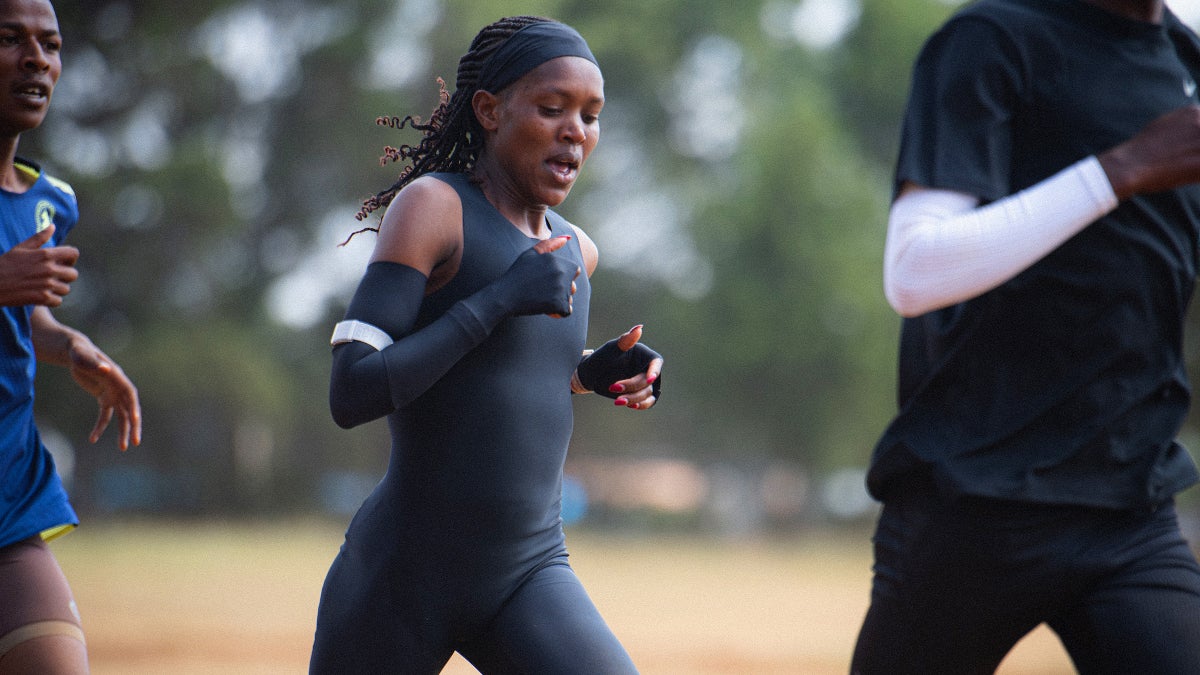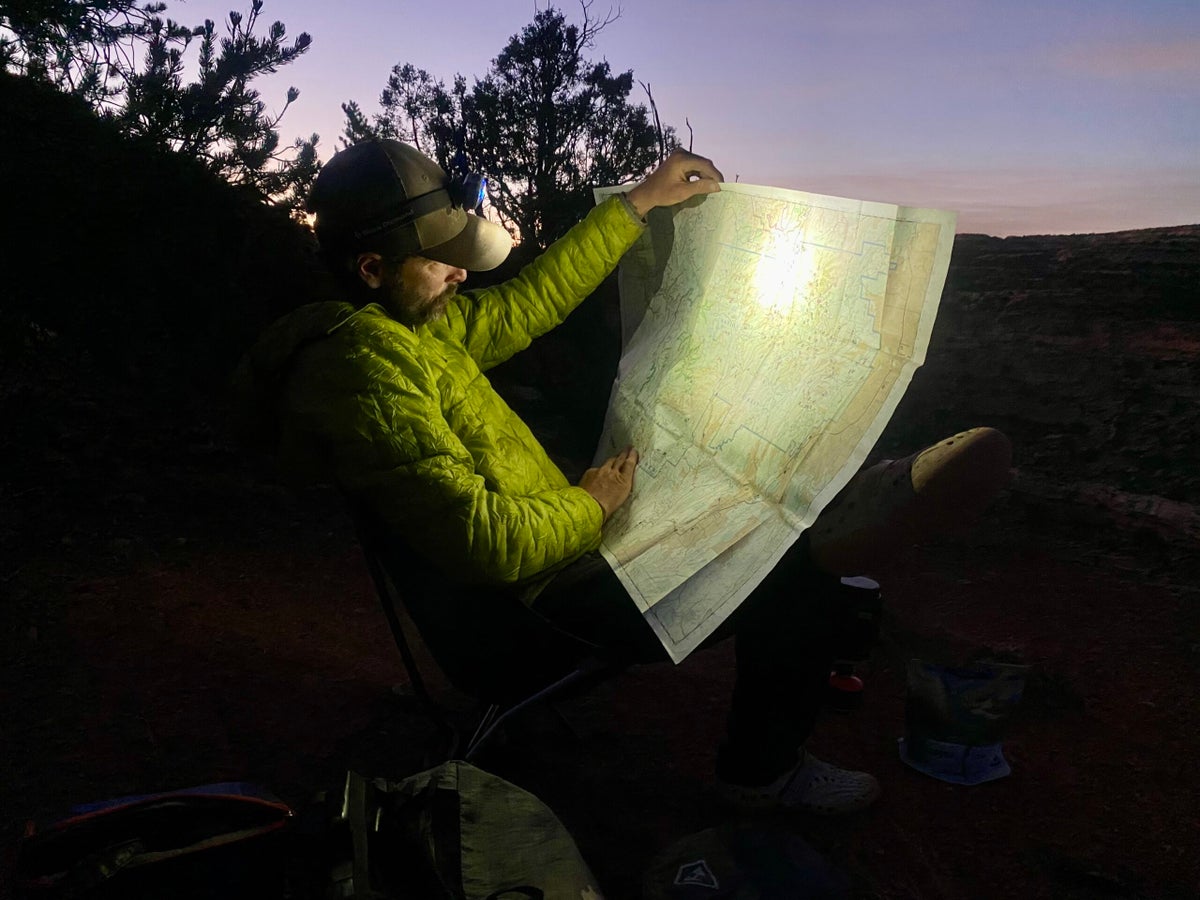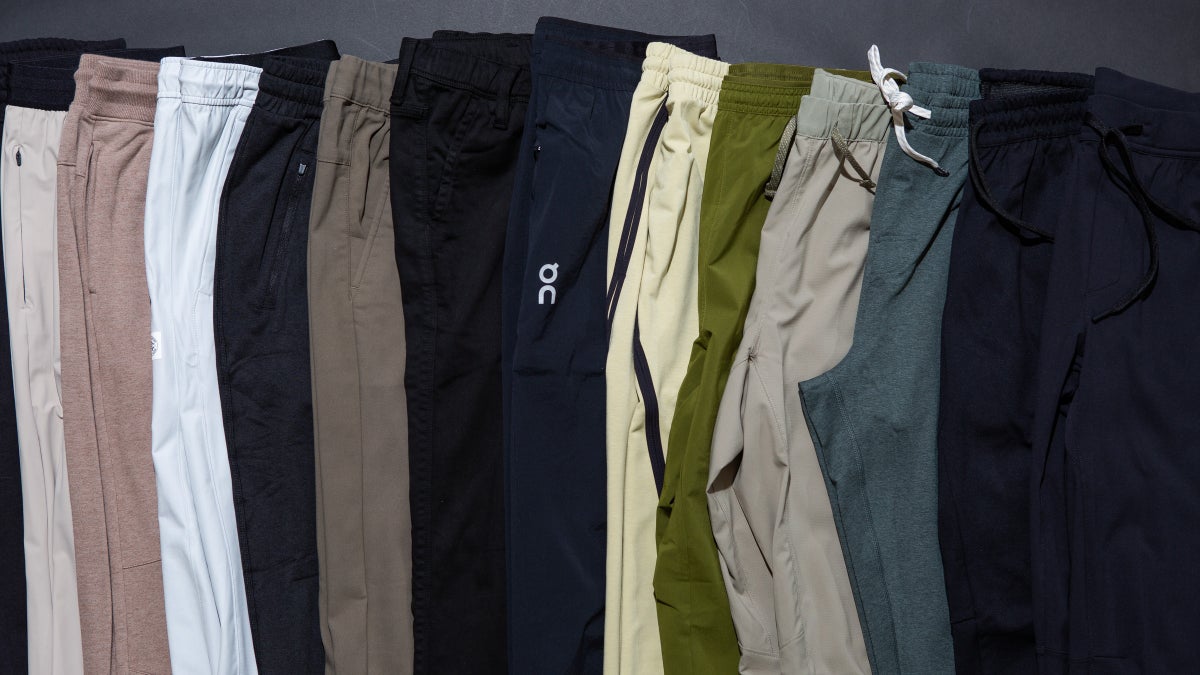
Earlier this week, I found myself dissecting an embargoed briefing video frame by frame, like a JFK obsessive trying to squeeze meaning from the Zapruder film. I’d just had an interview with three top scientists from Nike’s Breaking4 team, the group tasked with coordinating Faith Kipyegon’s attempt to run the first women’s sub-four-minute mile later this month. I got some answers, but I still had some big questions, and I hoped the video might reveal some clues.
Ever since Nike announced the Breaking4 initiative back in April, there’s been speculation about how Kipyegon will be able to make the leap from her current world-record time of 4:07.64 to sub-four. It’s reminiscent of the uncertainty that surrounded the company’s Breaking2 project in 2017, when they announced that Eliud Kipchoge and two other runners would aim for a sub-two-hour marathon at a time when the world record was 2:02:57. Such a big leap—2.4 percent, compared to the 3.1 percent Kipyegon needs—seemed implausible, and most observers dismissed the announcement as an overhyped publicity stunt. Then Kipchoge ran 2:00:25 (and later broke 2:00 in another exhibition race). So the commentary this time has been more circumspect. Nike must have something up their sleeve, the thinking goes, otherwise they wouldn’t be sticking their necks out.
The three experts Nike made available to discuss the project were Carrie Dimoff from the Innovation Footwear team, Lisa Gibson from the Apparel Innovation team, and Brett Kirby, a physiologist at the Nike Sport Research Lab. The choice of experts tells us which levers the company hopes to pull in pursuit of a four-minute mile. Here’s what they revealed.
The Shoes
The least surprising news is that Kipyegon will be wearing bespoke racing shoes, dubbed the Victory Elite FK, designed to make her faster than she was in the Victory 2 spikes she set her current record in. How much faster the new shoes will be is hard to determine, though.
When Kipchoge ran Breaking2, he did so in a radical new shoe design featuring a curved carbon fiber plate and a thick layer of ultra-resilient midsole foam. Those shoes came with a lab-tested promise: they made runners four percent more efficient, on average. That kind of efficiency difference is capable of reducing race times by two to three percent. In other words, the shoes alone made Breaking2 plausible.
Quantifying the benefits of Kipyegon’s new spikes is harder for a couple of reasons. One is that you can only measure efficiency accurately when you’re running slower than your aerobic threshold. At faster speeds, like your mile race pace, you start relying on “anaerobic” metabolism, which doesn’t require oxygen. Since running economy is calculated based on how much oxygen you’re consuming, our go-to measurement techniques are no longer accurate once you go anaerobic.
Even if it was possible to measure running economy at mile speed—if we knew that, say, the new spikes were 4 percent more efficient than previous models—that wouldn’t tell us exactly how much faster Kipyegon could run. For marathons, efficiency is crucial, because in a long race you’re inevitably going to run low on fuel. In a mile, you don’t have enough time to empty the tank. Efficiency is still useful, but it’s not the race-defining factor is it in longer events.
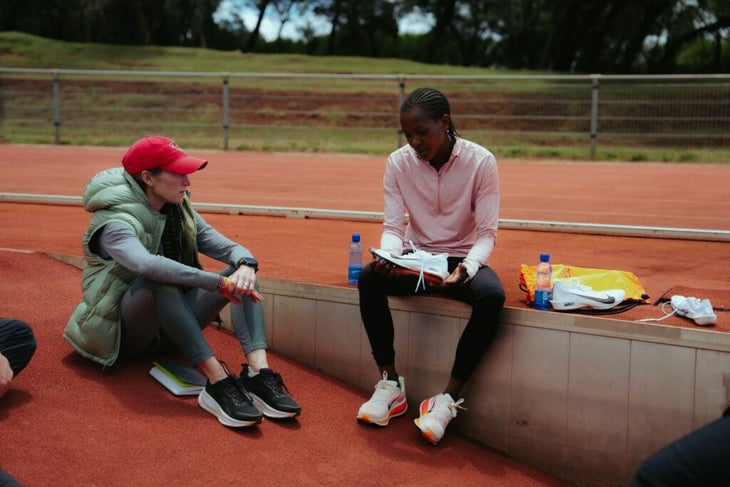
For sprinters, fuel efficiency is basically irrelevant. Instead, they’re concerned with how effectively they can transmit force to the ground to propel themselves forward, energy costs be damned. Milers are somewhere in the middle, needing to find a balance between efficiency and force transmission. The data Dimoff and her team collected on Kipyegon’s various shoe prototypes used a force-sensing treadmill to figure out how much power she could transmit to the ground, as well as biomechanical analysis to estimate how much energy she was burning. They didn’t share any numbers, but they saw measurable improvement in those parameters as they fine-tuned successive iterations of the new Victory Elite FK design.
More generally, there’s not a lot of data on the new generation of superspikes, which, like the road-running supershoes introduced in Breaking2, tend to have a midsole unit with lightweight, resilient foam, often alongside a stiff carbon fiber plate. The best info we have on such spikes comes Wouter Hoogkamer and his colleagues at the University Massachusetts, Amherst’s Integrative Locomotion Lab. They found that runners tended to go about 2 percent faster in superspikes than in conventional spikes.
An interesting detail in Hoogkamer’s data is that men ran faster in spikes that had a carbon plate in addition to the foam midsole. For women, on the other hand, the carbon plate didn’t make any difference. That suggests that the generic plate used in the test shoes might have been too stiff for the women to exert enough force to take advantage of its propulsive properties. If that’s true, then the extensive fine-tuning that Nike is doing to create a shoe specifically tailored to Kipyegon’s stride has the potential to make her faster than an off-the-shelf shoe.
With that preamble, what does Kipyegon’s new shoe look like? In some ways, it’s a lot like the Victory 2 that she wore last year. It has an air pod (a bubble designed to compress and then spring back to return energy) under the forefoot, a wedge of ZoomX foam under the heel, and a curved carbon fiber plate running under the length of the sole. They’ve pulled out all the stops to use thinner and lighter materials for the upper, and the spikes themselves—six rather than the four in the Victory 2—are 3D-printed titanium to reduce weight. As a result, the Nike team has been able to make the forefoot air pod three millimeters thicker, which gives a little more energy return over the Victory 2. According to Dimoff, the air pods return more than 90 percent of the energy you put into a given foot strike.
World Athletics rules limit the stack height (i.e. the total thickness of the sole) of track spikes to 20 millimeters. Dimoff said the shoe will conform to this and other requirements. In fact, in Kipyegon’s sole track outing of the year so far, a 1,000-meter race in 2:29.21 at the Xiamen Diamond League race in April, she wore a version of the new shoe which had gone through the World Athletics approval process (I’m pretty sure it’s the Dev 611 shoe listed here). That certification process takes about 30 days; since Dimoff’s team wants to continue making tweaks right up to the last minute, they won’t be submitting the Breaking4 shoe for certification, but expect that it would pass if submitted.
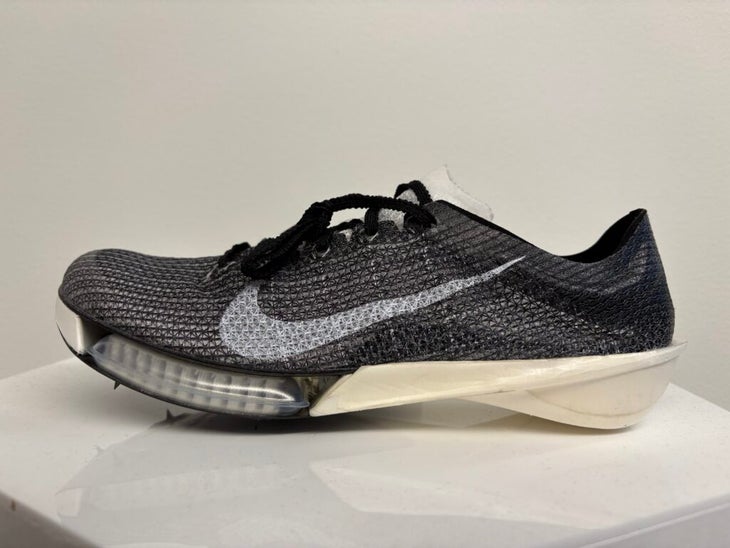
The Apparel
There’s lots to say about the “Fly Suit” Nike is designing for Kipyegon, but I’m probably not the right person to say it. A lot of the focus for Gibson’s team is making sure that Kipyegon feels good—comfortable, confident, unconstricted—while she runs. I’m a big believer that these factors are important, but they’re very hard to quantify.
Of course, the team did do a ton of aerodynamic testing, both in the wind tunnel and with simulations. The fabric has 3D-printed Aeronodes: little bumps of varying size distributed across the garment to create mico-eddies that reduce the turbulence of the air flowing past Kipyegon. The suit comes with arm sleeves with articulated elbows to minimize creasing, which also extend forward to cover the knuckles, where some of the most turbulent air can be found. It’s got a headband, the running equivalent of an aero helmet in cycling. Nike is also debuting a special new sports bra that’s 3D-printed out of ultralight TPU, a polymer that’s better known to runners as one of the midsole foam materials used in supershoes.
How much does this stuff matter when you put it all together? Presumably Nike has a wind tunnel estimate comparing runners’ energy consumption with the new suit compared to business-as-usual, but the researchers didn’t share it. For Breaking2 in 2017, one of Nike’s apparel specialists told me they figured they would get somewhere between a second and a minute over the course of the marathon from all the aerodynamics they’d worked on—and that this was crucial, because if Kipchoge missed the two-hour barrier by a second, they would never forgive themselves. Gibson told me something similar about the Breaking4 suit: “We didn’t want to leave anything on the table.”
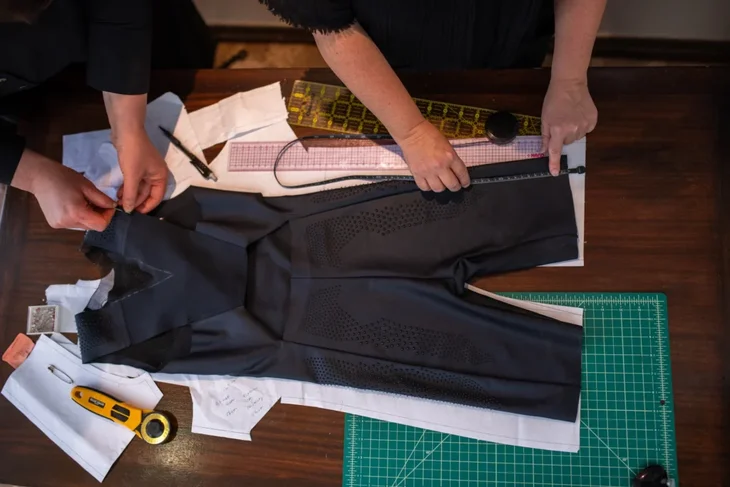
Everything Else…Including Drafting
Adding up the hypothetical numbers for the shoes and clothing, a four-minute mile still seems far away. I was imagining some pretty far-out scenarios when Nike first announced this attempt, like a specially built track with perfect bounciness and optimized curves, but Kirby shot those ideas down quickly. The race is going to take place at Stade Charléty in Paris sometime between June 26 (the most likely date) and June 28. They’re not building anything new or modifying the stadium or track surface in any way. They chose it because, based on a review of decades of environmental data, it’s likely to have great weather and in particular a low likelihood of storms. It also helps that Kipyegon has set a couple of world records in that stadium: 5,000 meters in 2023, 1,500 meters in 2024.
I asked about nutrition and supplements. For example, Kipyegon has reportedly tried baking soda in at least some of her prior races. Kipyegon has her own nutrition team through her sports management agency, according to Kirby, so Nike isn’t making any changes to the regime she’s already on. They are, however, monitoring and analyzing her training. What sort of insights does that provide? Kipyegon is strongest over the 1,500 to 5,000-meter range rather than over shorter distances like the 800 meters, Kirby noted, so the training analysis indicated that she needs to develop her speed—or, as physiologists would say, her anaerobic capacity. Kipyegon’s legendary coach, Patrick Sang, probably didn’t need a supercomputer to uncover this insight, but perhaps there’s some fine-tuning of the balance between speed and endurance that’s helpful.
That leaves drafting. After Breaking2, most of the post-mortems attributed Kipchoge’s big leap in performance to some mix of supershoes and the pacers who surrounded him and blocked the wind for almost the entire race. Some thought his success was virtually all pacers; others thought it was virtually all shoes, and that debate continues to this day. Breaking4 will give us another datapoint. In this case, the shoes don’t seem like a radical break with the shoes Kipyegon and others have already been wearing, so it seems to me they must be relying on drafting. Some recent research from Rodger Kram’s group at the University of Colorado, completely unconnected to the Breaking4 initiative, suggested that drafting alone would indeed be enough to get Kipyegon to sub-four.

How will they do it? Nike’s official line is that they haven’t decided yet. How many pacers will there be? TBD. In what formation? TBD. Will they be men or women? TBD. Will they run the whole race or, as in Breaking2, sub in and out partway? TBD. Will there be pacers at all, or might she just run a solo time trial guided by nothing but pace lights? TBD. I can believe that they’re still fine-tuning the details, but I have a hard time believing all those options are still on the whiteboard.
That’s where the frame-by-frame video analysis comes in: In one of Nike’s briefing videos about the science, in the background at what appears to be the forest-shrouded track on Nike’s main campus, you can see glimpses of what looks like drafting experiments going on. A runner clad in white circles the track with something—perhaps an air pressure or wind sensor?—strapped to their chest. Sometimes they’re alone; sometimes there are two other runners in black singlets directly and diagonally in front of them; sometimes there are three. In one shot, five pacers form a half-diamond in front, beside, and behind the central runner.
Which configuration will it be? Who knows. My best guess, triangulating between physiology and optics, would be either one shift of five men taking her all the way to the finish, or two to three shifts of five women taking turns. But I can’t blame the Nike team for not spilling all the details in advance. I would probably do the same in their shoes. However you add up the numbers, getting to sub-four is going to require a stupendously, perhaps even magically, good day. On his best days, Eliud Kipchoge seemed to be able to summon some magic from a deep well-spring of self-belief that transcended all the shoe tech and pacers and hyper-optimized conditions. Nike is clearly hoping that Kipyegon will be able to do the same. But the thing about magic is that, if you talk about it too much, it tends to disappear.
Faith Kipyegon’s Breaking4 race is scheduled for the evening of June 26. I’ll be providing on-the-ground coverage from Paris before, during, and after the race, so stay tuned.
For more Sweat Science, join me on Threads and Facebook, sign up for the email newsletter, and check out my new book The Explorer’s Gene: Why We Seek Big Challenges, New Flavors, and the Blank Spots on the Map.
The post Nike and Faith Kipyegon Plan to Crack the Four-Minute Mile This Month. Here’s How. appeared first on Outside Online.











